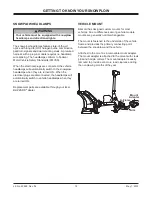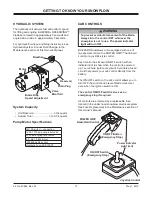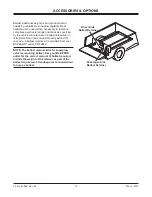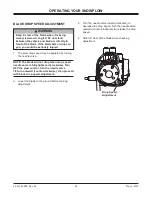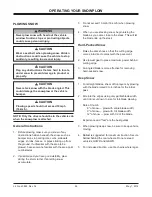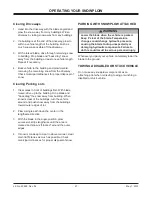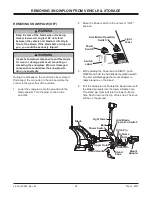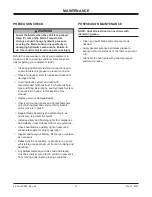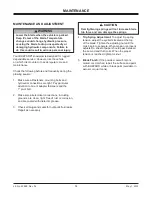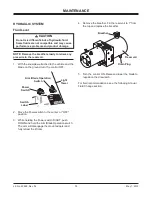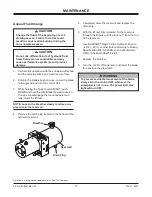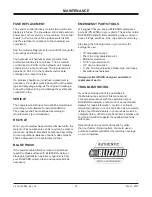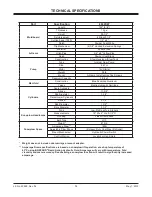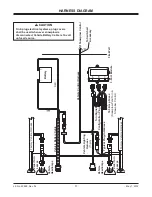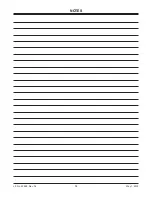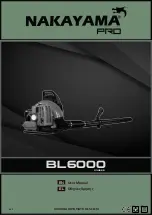
Lit. No. 40688, Rev. 04
26
May 1, 2012
PLOWING SNOW
NOTE: Only the driver should be in the vehicle cab
when the snowplow is attached.
General Instructions
1. Before plowing, make sure you know of any
obstructions hidden beneath the snow, such as
bumper stops in parking lots, curbs, sidewalk
edges, shrubs, fences, or pipes sticking up from
the ground. If unfamiliar with the area to be
plowed, have someone familiar with the area point
out obstacles.
2. If possible and you have good visibility, plow
during the storm rather than letting snow
accumulate.
CAUTION
Wear a seat belt when plowing snow. Hidden
obstructions could cause the vehicle to stop
suddenly, resulting in personal injury.
CAUTION
Never stack snow with the blade angled. This
could damage the snowplow or the vehicle
bumper.
CAUTION
Flag any obstructions that are hard to locate
under snow to prevent damage to product or
property.
WARNING
Never plow snow with head out the vehicle
window. Sudden stops or protruding objects
could cause personal injury.
CAUTION
Plowing speed should not exceed 10 mph
(16 km/h).
3. Do not exceed 10 mph (16 km/h) when plowing
snow.
4. When you are stacking snow, begin raising the
blade as you come close to the stack. This will let
the blade ride up the stack.
Hard-Packed Snow
1. Raise the disc shoes so that the cutting edge
comes into direct contact with the pavement.
2. Use lowest gear to place maximum power behind
cutting edge.
3. An angled blade is more effective for removing
hard-packed snow.
Deep Snow
1. For straight blades, shear off top layers by plowing
with the blade raised 3 to 4 inches for the initial
pass.
2. Bite into the edges using only partial blade width
until job is cut down to size for full-blade plowing.
Rule of thumb:
6" of snow — plow with entire blade width;
9" of snow — plow with 3/4 blade width;
12" of snow — plow with 1/2 of the blade.
Experience and "feel" are the best guides.
3. When plowing deep snow, be sure to keep vehicle
moving.
4. Ballast is suggested for maximum traction. Secure
ballast behind the rear wheels. Do not exceed
vehicle's GVWR and GAWR.
5. For increased traction, use tire chains where legal.
OPERATING YOUR SNOWPLOW
Summary of Contents for 57520-1
Page 2: ......
Page 4: ......
Page 6: ...Lit No 40688 Rev 04 6 May 1 2012...
Page 38: ...Lit No 40688 Rev 04 38 May 1 2012 NOTES...
Page 39: ......

